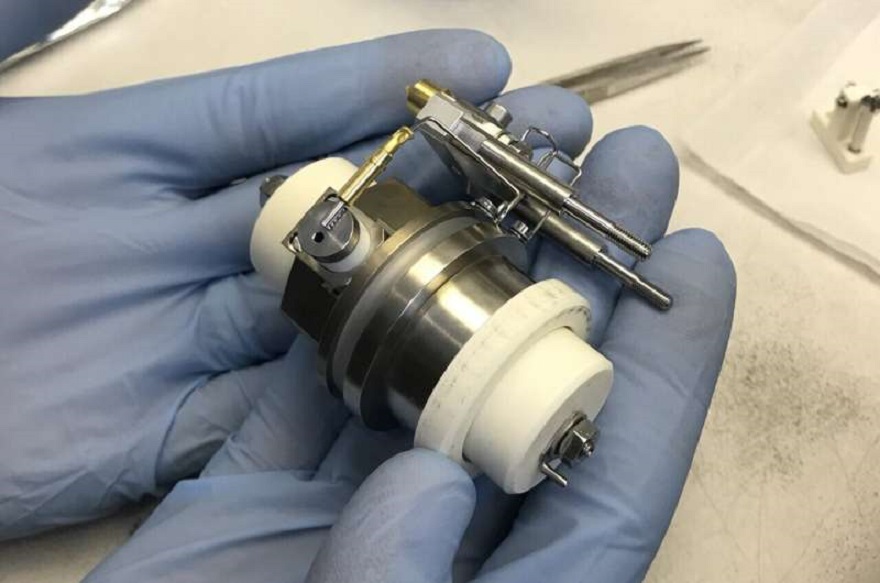Engineers have developed a laser device that, with a small weight, is able to perform chemical analysis no worse than bulky equipment. It will help scientists search for organic compounds on the moons and planets of the Solar System.

New laser device
A team of engineers from the University of Maryland has developed a new laser device that can be used in space missions for chemical analysis of samples. An article about this device appeared in the journal Nature Astronomy on January 16.
The peculiarity of the new equipment is that it has a weight of only 7.7 kg, but is able to perform chemical analysis no worse than much more massive equipment. Its basis is a pulsed ultraviolet laser capable of instantly vaporizing a tiny part of the material.
Another component of the device is the Orbitrap analyzer, which performs chemical analysis. According to the developers, it is based on a well-known commercial product that works in many laboratories around the world. The only difference is that the prototype weighs as much as 180 kg.
The work of the engineers was not only to reduce the analyzer without loss of functionality. They also added the ability to perform mass spectroscopy with laser desorption. This method has not been used in space until now because of the large energy consumption. But the developers solved this problem.
Exploring other planets
The main field in which the new device is proposed to be used is automatic probes and rovers that will work on the planets of the Solar System and their moons. The new laser uses energy very efficiently. That is, only a tiny part of the sample is instantly vaporized and analyzed, which is almost not damaged.
Scientists are particularly interested in the possibility of working with organic substances with great accuracy. The fact is that mass spectrometers usually determine the very presence of organic matter and the simplest substances, such as ammonia and methane. But the determination of the structure of proteins is difficult for them.
At the same time, scientists have recently become convinced that organic matter is not always produced by living organisms. That is, simple organic substances cannot be reliable indicators of life on the planet.
Only amino acids and proteins were able to accurately testify that there really was life on some celestial body. And it is for their detection that the new laser device is very well suited. So, it is quite possible that soon we will see it on missions exploring the icy moons of giant planets or the Moon.
According to phys.org
Follow us on Twitter to get the most interesting space news in time
https://twitter.com/ust_magazine

